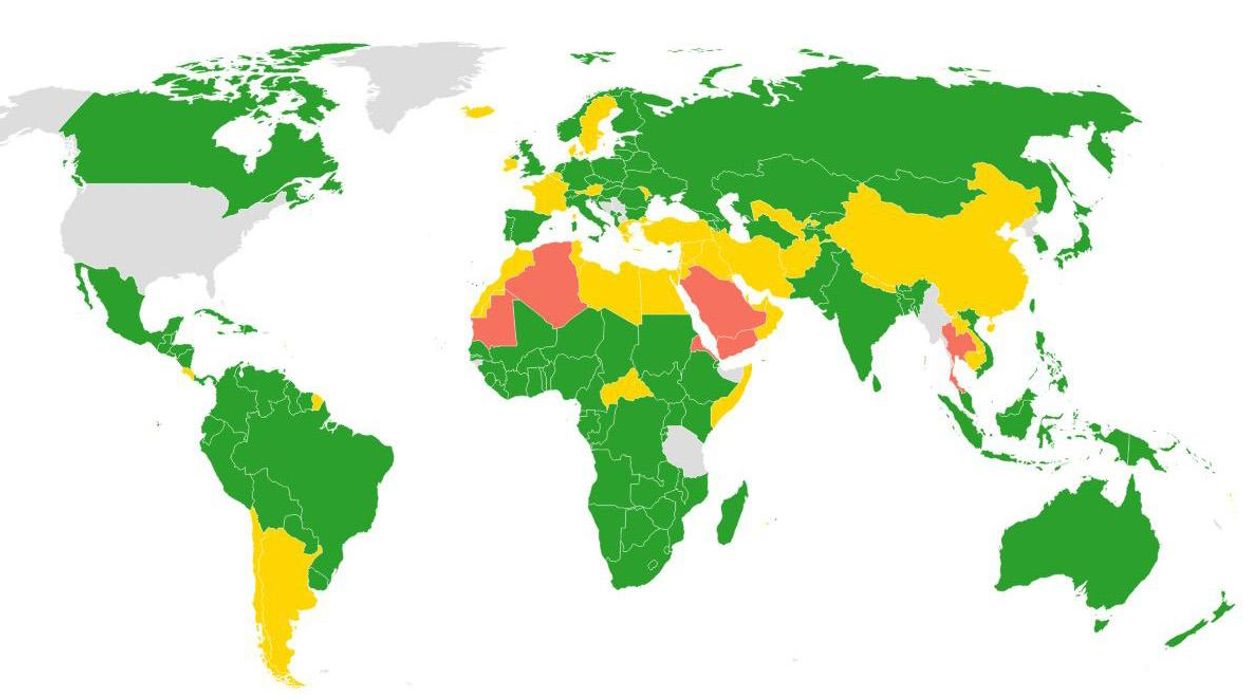News
Bridie Pearson-Jones
May 03, 2017

Picture:
Bridie Pearson-Jones / Datawrapper
Global restrictions on "social hostilities" towards religion have increased for the first time in three years, according to new research from the Pew Center.
The share of countries with “high” or “very high” levels of government restrictions, such as laws that restrict religious beliefs, increased from 24% to 25% and the percentage of countries with high or very high social hostilities that restrict religious activity has raised from 23% to 27%.
Social hostilities include factors such as mob violence related to religion. In Europe, there were 17 countries where incidents of religion-related mob violence were reported in 2015, up from nine the previous year.
The Pew Center looked at 198 countries in the study, 105 (53%) experienced widespread government harassment of religious groups. This is up from 85 (43%) in 2014 and 96 (48%) in 2013.
Government use of force against religious groups also increased; 23 countries (12%) experienced more than 200 cases of government force in 2015, up from 21 (11%) in 2014.
The Middle-East and North Africa have the largest proportion of government harassment and use of force against religious groups - but Europe had the largest increase in government harassment between 2014 and 2015. 27 European countries (60%) saw widespread government harassment or intimidation of religious groups in 2015, up from 17 countries in 2014.
France and Russia were the only two countries in Europe that have each had more than 200 cases of government force against them. In France, it's mostly cases of individuals being punished for violating bans on face coverings in public spaces. In Russia most cases of government force were as a case of publicly exercising religion.
Read the full report via the Pew Center.
Top 100
The Conversation (0)












